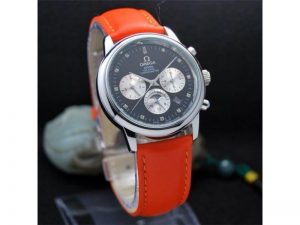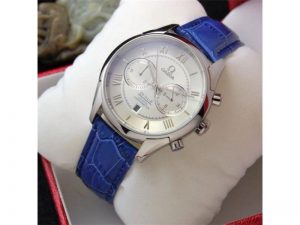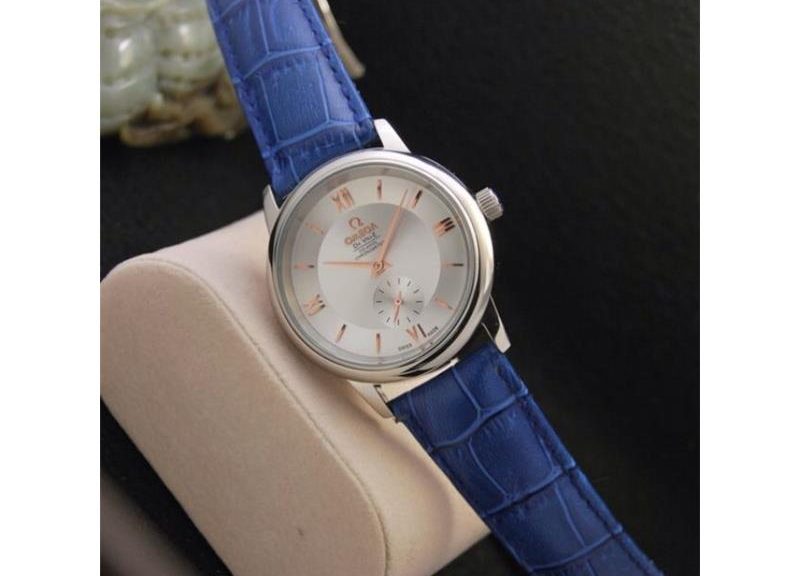It actually happened in 2011 that Omega released the Speedmaster Co-Axial Chronograph, a modern fashionable Speedmaster equipped with an all-new, 9300-series, two-register, automatic chronograph movement. Since then, they have officially called this collection a range of different and wildly confusing names, including the Speedmaster Moonwatch, although it very much belongs to that group, all fake watches that have absolutely never ever been to the moon. 
This is to say that around the classic fake Omega Speedmaster “Moonwatch” grows an increasing variety of other replica Omega Speedmaster chronographs. And while the “original” Moonwatch I bet will remain unchanged until we colonize the moon, it also is one of the very few watches that deserve the label “iconic.” The good news this entails though is that the rest of the Speedmaster collections are free to change and evolve as the fake Omega and the market dictates. Now, with the Omega Speedmaster Racing Master Chronometer, we see what that unequivocally dictated direction is, and I am glad to see and report: it means more wearable, technically more advanced, and visually more fascinating.
Before we go ahead, a quick word about the history of the racing dial, and especially an interesting quirk that you may want to know, next time someone poses as a historian and gives whatever storied explanation for the racing dial’s existence: “Despite great research and theory, the exact origin and purpose of these 1968 models is still shrouded in mystery.” These are replica Omega’s words on the racing dial – and I appreciate them being up-front about this fact rather than making up some faux, misty-eyed racing story instead.
Another important update is how the 9300 caliber has been updated to the 9900 version. There’s plenty of boasting on both the front and back to help you figure out if this is the latest generation of Omega in-house movements: the dial says “Co-Axial Master Chronometer” on it while the rotor has “Omega Master Co-Axial 9900” written in red. I was there at fake Omega’s event in Geneva in late 2014 when they announced their new partnership with METAS, and I also recall how many times since then I’ve had to fact-check the exact wording Omega uses to refer to these calibers.
It is quite confusing since the exact same watch refers to two very similar things in two different ways: as it turns out, “Co-Axial Master Chronometer” and “Master Co-Axial” mean that this watch is a chronometer, and, as the text on the rotor explains, also METAS-certified tested in-house by Omega. Apart from these updates, the racing dial returns once more – if I remember correctly, as a first for this larger Speedmaster – and with it also comes a new, perforated, sporty-looking strap. It really cannot possibly get any more confusing than Co-Axial Master Chronometer and Master Co-Axial – not to mention that not too long ago Omega Seamaster 300 dials said Master Co-Axial Chronometer, which already had the “Master Co-Axial” bit in it. 
The eye-trickery comes from the fact that the Speedmaster Racing has a very thin case profile – in the traditional sense, that is. The super long, nicely curved, polished edge runs from the end of the upper lug and doesn’t end until the other corner of the watch. Now, the trick is in the fact that the case-back itself is just as thick as the case-band, but it is tucked away in a way that most of the time when the watch is on the wrist it cannot be seen at all. Therefore, when you look at the watch on your wrist, it gives the illusion of a slim cheap watch that sits a finger’s width above the wrist – this is possibly the best way to describe it. While it may sound clumsy – loosely worn replica watches I find look clumsy not all, but the majority of times – in truth it actually looked just fine in this instance.
